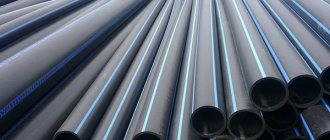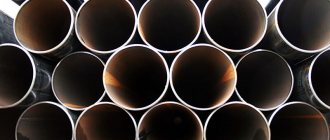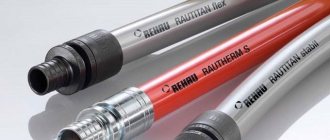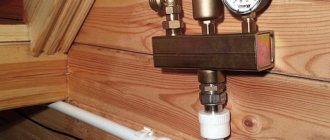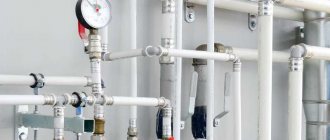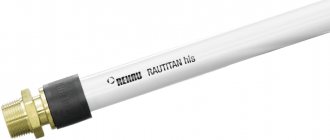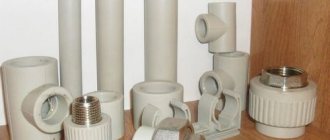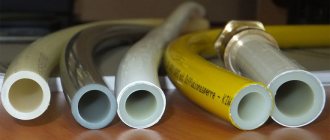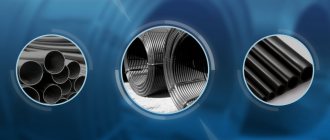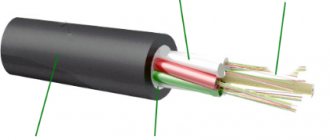A pipe made of low-density polyethylene has many advantages over its metal counterparts. PE pipe is not subject to corrosion. It is resistant to contamination of biological and mechanical origin: this is possible thanks to the smooth walls. Service life exceeds 50 years. Technical HDPE pipe 32 mm in diameter is suitable for creating a free-flow sewer system and protecting wiring from environmental influences. The price of 32 mm HDPE pipe makes it more affordable than metal products. In addition, plastic pipe is much lighter, which makes delivery and installation easier. From us you can buy 32 mm HDPE pipe at a very attractive price. Sales are carried out in Moscow and the region in any volumes wholesale and retail. Delivery to other regions of Russia is possible. For wholesalers, we have provided individual prices and payment terms.
LDPE and HDPE
We are talking about the same polymer - polyethylene, but obtained in different ways. LDPE is produced under high pressure, which gives the material viscosity, flexibility and thermoplasticity. HDPE is manufactured under low pressure - from 0.1 to 2 MPa, and its characteristics are completely different.
- Density is higher than that of LDPE, 0.94–0.96 g/cubic meter. cm. The material is almost opaque.
- High tensile strength and high hardness - with this production method, a small number of branched bonds are formed in the polymer. This reduces elasticity, but increases strength characteristics.
- Less thermoplasticity - melting point 130 C, the material is less susceptible to deformation when heated.
- Gas permeability is the main quality that ensures the use of a polymer as a material for plumbing. The indicator is five times lower than that of ordinary polyethylene, so during operation the pipe does not allow air dissolved in water to pass through.
- Inertness – the polymer is insensitive to fats and oils.
HDPE pipe sizes
Polyethylene pipeline systems are widely used in various sectors of the national economy. This is a reliable, convenient and, most importantly, budget-friendly alternative to metal pipes. Products made from low-density polyethylene (HDPE) are most in demand due to the physical properties of the structural material. HDPE products have various linear parameters, which are primarily taken into account when choosing a specific type of product for installation of communications.
HDPE material – what is it?
The popularity of HDPE plastic pipes in various areas of economic activity is determined by the technical characteristics of the material from which they are made. Low-density polyethylene (as the abbreviation HDPE stands for) is obtained as a result of the polymerization of ethylene gas, which occurs under specified conditions: a pressure of 20 atmospheres and a nominal temperature of 20⁰ C in special pressure chambers. The reaction results in a material with unique characteristics used to make pipes. The properties of the resulting product determine the features and advantages of HDPE pipes:
- high strength margin: products can withstand pressure of 50 atmospheres;
- light weight, which simplifies installation (a cubic meter of HDPE pipe weighs approximately 900 kg);
- low expansion coefficient when exposed to high temperatures: when heated to 70⁰ C, the pipe dimensions change by only 3%.
A characteristic feature of this product is its small operating temperature range (from 0⁰ C to 40⁰ C). Temperatures below the minimum value make the pipe brittle, and at temperatures above the maximum, the ring rigidity of the product decreases. These features determine the use of low-density polyethylene pipes:
- for laying technical and drinking water pipelines;
- sewer systems;
- gas pipelines;
- transportation of other liquids, inert to polyethylene, with operating temperatures up to 40⁰ C.
The properties of HDPE pipes and their areas of use also depend on other parameters: polyethylene grade, diameters, wall thickness, throughput. The most popular type of HDPE pipes is PE 100, which can withstand pressures of up to 10 MPa and has a standardized 1000-hour safety margin.
What standards regulate the size of HDPE pipes?
The production of polyethylene pipes is regulated by certain standards: domestic GOST 18599-2001 and international ISO 4427-1:2007. The final stage of production is the marking of HDPE pipes - applying information about the manufacturer and technical parameters to their surface. The dimensions of HDPE pipes are standardized: they are regulated by the international standard ISO 161-1.1996. What parameters are taken into account when grading products?
- Brand. Indicates the operating pressure of the product: for example, for PE 100 the limit is 10 MPa.
- Diameter, D. As a rule, only the external diameter is indicated, which is measured in millimeters; The cross-section for gas and water supply pipes is often indicated in inches.
- Wall thickness, S. Provided that the outer diameter is 10 mm, the wall thickness does not exceed 2 mm, this indicator increases with increasing diameter sizes.
- SDR ratio. This indicator indicates the ratio of the outer diameter of the pipe to the thickness of its wall. The lower the SDR, the better the pipe capacity and vice versa. The indicator is marked as follows: SDR 26, SDR 11, etc. The SDR value varies in the range 6 – 41. For pipes with the same diameter, a lower SDR value indicates a larger wall thickness.
- Maximum operating pressure level PN. If the recommended parameters are met within the normal limits, the pipe will last at least 50 years.
- The length of the product is indicated in meters.
HDPE water pipes
Products for water and gas supply are available in two types.
- Smooth - a single-layer product with a smooth surface, both external and internal. Depending on the diameter, it is used both for supplying water and for protecting power cables.
- Corrugated - can be one- or two-layer. In this case, the inner surface is smooth, and the outer surface is corrugated. This structure provides greater strength and rigidity to the products. Corrugated pipelines are used to organize drainage and sewer systems, where high strength is required when laid at depth.
Main features of the material
Ethylene is an organic compound used in the chemical industry. It is used to produce polyethylene (PE) by polymerization. There are 2 technological processes:
- Production of low-density polyethylene (HDPE) at a temperature of 120-150°C and a pressure of 0.1-2 MPa.
- Production of high-density polyethylene (HDPE) at a temperature of 200-260°C and a pressure of 150-300 MPa.
HDPE (or HDPE - High Density Polyethylene) has high strength and density. LDPE (or LPDE - Low Density Polyethylene) is a low-density material characterized by softness, ductility, and ductility.
Technical HDPE pipes can be used in the country for sewerage networks, drainage, as protective ducts, for laying electrical cables, etc. HDPE water pipes are black, this is their distinctive feature.
When laying a water supply network in the ground at a dacha, it is necessary to ensure that the depth of the trench is lower than the freezing point of the soil, and the width is the minimum required for the location of the pipe.
Pipes made of low-pressure polyethylene are suitable for laying underground water supply in a country house.
Note! It is optimal to place a section of the pipeline in the ground that does not have connections.
HDPE pipe 32 mm: application
The product is designed for technical water supply and is used in the formation of transmission systems for both water and other liquids to which the material is chemically resistant. The photo shows a sample of 32 mm HDPE.
The maximum permissible water temperature is 40 C, therefore, the HDPE 32 water supply pipe is not used for hot water supply.
Areas of use:
- non-pressure technical water supply;
- irrigation and reclamation systems, water supply for greenhouses and hotbeds;
- non-pressure sewer system (with installation in the ground);
- protection of power cables;
- waterproofing shells.
Technical characteristics of polyethylene products
Technical characteristics of HDPE pipes for water supply are given in the table.
Table 1
| Diameter, mm | 40 | 32 | 25 | 20 |
| SDR | SDR9/SDR11 | |||
| Wall thickness, mm | 4,5/3,7 | 3,6/3,0 | 2,8/2,3 | 2,3/2,0 |
| Maximum working pressure, MPa | 1,6/1,25 | |||
| Weight of 1 linear meter, kg | 0,3-0,5 | 0,2-0,3 | 0,15-0,2 | 0,12 |
Technical indicators for pipes of all brands and sizes are indicated on average in the table.
table 2
| Index | Meaning | Unit |
| specific heat | 2300-2700 | J/(kg*K) |
| melting temperature | 120-135 | °C |
| frost resistance | -70 | °C |
| density | 948-960 | kg/m3 |
| melt flow | 0,1-15 | g/10 min |
| tensile yield strength | 0,019-0,026 | GPa |
| Breaking stress | ||
| when stretched | 0,018-0,032 | GPa |
| when compressed | 0,02-0,036 | GPa |
| when bending | 0,02-0,04 | GPa |
| Elastic modulus | ||
| when bending | 0,636-0,735 | kPa |
| when stretched | 0,61-0,75 | kPa |
| water absorption per day at 23 °C | 0,01 | % |
| coefficient of thermal conductivity | 420-440 | mW/(m*K) |
| degree of crystallinity | 70-85 | % |
Advantages and disadvantages
HDPE pipes 32 mm have useful user characteristics.
- Corrosion resistance – products are not susceptible to rust or fungus, and do not require protective coatings.
- Inertness - the material is resistant not only to acid and alkaline solutions and cannot be destroyed, but also retains the primary composition of the supplied liquid.
- Smooth internal surface - does not allow the deposition of salts, mechanical debris, silt and the like. The working diameter of HDPE 32 mm does not change over time.
- Plasticity - when water freezes, a plastic pipeline, unlike a steel one, does not break or deform. A 32 mm HDPE water pipe can increase its volume by up to 8% under the influence of increased pressure, and then return to its original state after the liquid defrosts.
- The same property allows the use of polyethylene water conduits when laying in seismic active zones or simply unstable soils where movement is possible.
- Durability – up to 50 years.
- Installation is much easier and faster, since, firstly, the weight of the products is much less, secondly, the connection is simpler, and thirdly, the pipeline does not need waterproofing.
- The cost of a water supply or sewer system is much lower both due to the price of the material and due to the reduction in installation costs.
Flaws.
- The maximum temperature of the transferred liquid for 32 mm HDPE pipes is 40 C. This characteristic limits the scope of application.
- The material is not resistant to ultraviolet radiation, therefore, when organizing a water supply system, it is necessary to ensure that the system is placed only in shaded areas.
Installation technology
The connection is made in several ways depending on the purpose, length of the pipeline, operating conditions, etc.
- Detachable connection - carried out using special elements - fittings. This method is recommended for HDPE pipelines of 32, 25, 20 mm, that is, with a small diameter. Fittings for HDPE pipes 32 mm are equipped with a sealing ring and a nut, and can be used several times. The detachable method ensures ease of repair and replacement in case of damage.
Polyethylene pipes HDPE PE-100 for utility and drinking purposes
- Polyethylene pipes
- PE-100 drinking pipes
We recommend that you read the information on the “Questions and Answers” page, which contains answers to the most frequently asked questions and describes the terms and concepts used in the site materials.
Drinking polyethylene pipes PE-100 are used in the construction of pipelines for transporting cold water. Pipes are manufactured strictly in accordance with GOST 18599-2001. We recommend that you familiarize yourself with this document: it describes all the diameters and geometric characteristics of pipes, possible tolerances in production, transportation and storage rules, guarantees and other subtleties.
We are often asked how PE-100 differs from PE-80. The answer to this and many other questions can be found on the page “Questions and answers on PE pipes”.
Appearance of HDPE PE-100 pipes
In 99% of cases, a PE-100 drinking polyethylene pipe can be identified by the blue stripes that are applied along the entire pipe. But situations are quite possible when these strips are either not applied, or the entire pipe material looks blue. This is quite normal and fully complies with GOST requirements.
In this case, to accurately understand that the pipe is drinking, you need to find a marking on the pipe - it is applied every meter along the pipe either with paint or embossing. This marking for the drinking pipe will contain the key phrase “GOST 18599-2001”.
If there is no marking, or another GOST or even TU is specified, then the pipe is not potable!
Pipes are produced either in sections from 6 to 13 linear meters, or in coils (if the pipe has a diameter less than or equal to 110 mm and the wall thickness allows the coil to be rolled safely). Often, in small orders, clients ask us to supply pipes in sections of less than 6 meters, so that they can be easily loaded into a GAZelle. In this case, we cut the pipe into pieces of the required length. But it is important to understand that in this case, the cut edges will be uneven, since the cutting is done with a hand-held circular saw.
Pricing for PE-100 pipes
All manufacturers of polyethylene pipes use a simple formula to determine product prices. The price of a pipe is determined as the product of the mass of a linear meter of pipe and the price per kilogram of raw materials. Since the mass of a linear meter is determined accurate to the third digit, the price of pipes is always accurate to the nearest kopeck (look at the price lists and make sure of this). Therefore, if you are given prices without kopecks (or even rounded to tens of rubles), then this means that you are dealing with a “beginner” reseller.
Discounts on pipes are also given not as a percentage of the cost of the pipe, but as a specific discount in rubles on the prices of raw materials. For example, not “we’ll give you a 15% discount,” but “we’ll knock off fifteen rubles.” Therefore, be careful if you are given a % discount on pipes - this is a bad sign. But discounts on fittings are given as a percentage.
Transportation of PE-100 pipes
Polyethylene pipes are usually transported in Euro trucks. To calculate the volume occupied by pipes, we recommend that you familiarize yourself with the documents “transport loading standards” and “calculated sizes of bays”. By the way, please note that when transporting pipes of large diameters (from 315 mm) or when loading the truck more than a third, you will definitely need bunks and belts.
- SDR:7.4
- Nominal pressure: 25 atm
- Price per kg: 145...170 rub.
Thick-walled pipes made of the latest polyethylene grade PE-100. Withstands a maximum pressure of 25 atm. Designed for critical water supply systems.
- SDR:9
- Nominal pressure: 20 atm
- Price per kg: 145...170 rub.
Thick-walled pipes made of the latest polyethylene grade PE-100. Withstands a maximum pressure of 20 atm. Designed for critical water supply systems.
- SDR:11
- Nominal pressure: 16 atm
- Price per kg: 145...163 rub.
Thick-walled pipes made of the latest polyethylene grade PE-100. Withstands a maximum pressure of 16 atm.
- SDR:13.6
- Nominal pressure: 12.5 atm
- Price per kg: 145...163 rub.
Thick-walled pipes made of the latest polyethylene grade PE-100. Withstands a maximum pressure of 12.5 atm.
- SDR:17
- Nominal pressure: 10 atm
- Price per kg: 145...163 rub.
Pipes made of the latest polyethylene grade PE-100. Designed for water pipelines with a maximum operating pressure of up to 10 atm.
- SDR:17.6
- Nominal pressure:9.5 atm
- Price per kg: 145...159 rub.
Pipes made of the latest polyethylene grade PE-100. Designed for water pipelines with a maximum operating pressure of up to 9.5 atm.
- SDR:21
- Nominal pressure: 8 atm
- Price per kg: 145...205 rub.
Pipes made of the latest polyethylene grade PE-100. Designed for water pipelines with a maximum operating pressure of up to 8 atm.
- SDR:26
- Nominal pressure: 6.3 atm
- Price per kg: 145...205 rub.
Pipes made of the latest polyethylene grade PE-100. Withstands a maximum pressure of 6.3 atm. They are used in non-essential water supply systems, gravity sewers and as shell pipes.
- SDR:33
- Nominal pressure:5 atm
- Price per kg: 145...205 rub.
Pipes made of the latest polyethylene grade PE-100. Withstands a maximum pressure of 5 atm. They are used in non-essential water supply systems, gravity sewers and as shell pipes.
- SDR:41
- Nominal pressure: 4 atm
- Price per kg: 145...205 rub.
Pipes made of the latest polyethylene grade PE-100. Withstands a maximum pressure of 4 atm. They are used in non-essential water supply systems, gravity sewers and as shell pipes.
Source: https://www.prombase.ru/water/truby-pe-100/
Marking - symbols
The intended use is indicated by a colored stripe that runs along the side of the product. This means the following:
- Blue color – water supply.
- Yellow – gas industry.
- Lack of color bar - technical needs.
In addition, products are marked according to their ability to withstand a certain pressure. It looks like this:
- PE 33 – up to 3.3 MPa (such pipes are practically never found).
- PE 63 – up to 6.3 MPa.
- PE 80 – up to 8 MPa.
- PE 100 – up to 10 MPa.
In the international format, such characteristics are designated as PE .
Transcript example
Let's decipher the marking of the PE 80 SDR13.6 40x1.2 drinking pipe GOST 18599-2001 , where:
- PE 80 – category of polyethylene and nominally permissible pressure.
- SDR13.6 – coefficient of ratio between diameter and wall thickness.
- 40x1.2 – pipe diameter and actual wall thickness.
- Drinking – specific application, in our case, suitable for laying pipelines with drinking water.
- GOST 18599-2001 is the state standard to which this product complies.
Labeling may include production date and batch number.
Fittings for polyethylene pipes
With their help, HDPE pipes are installed regardless of size and location. They are made in the same way as polyethylene pipes. Able to withstand natural disasters, including the effects of low and high temperatures. They withstand the action of any chemical elements for a long time and retain their original shape. They are used to give the pipe the appropriate direction.
There are four types of fittings:
- electric welded - designed for connecting gas and water pipes. Connected using electric welding;
- cast - when connecting them, butt welding machines are used. During the process, only the part that needs to be connected is heated. After heating the base, parts of the fitting are attached to the other half and immediately cooled, after which they are soldered;
- compression - the use of welding during installation is not required, since the connection is made using a lock nut;
- welded - mainly used for cold water supply. This type is classified as a non-separable type, since the connection is carried out during the production of these products, and is produced in the form of ready-made connections for pipe bends.
Do you use polyethylene pipes on your farm? How did the products perform during operation? Are you satisfied with the result? We invite you to share useful information in the comments.
What thickness of HDPE pipe should I choose for water supply?
When purchasing polyethylene pipes, the following are taken into account:
- pressure indicators;
- features of network laying;
- room parameters;
- requirements of industry standards.
The best option is to consult a qualified professional. The technician will go to the site, take measurements, and get acquainted with the connected equipment.
HDPE pipe, which is better? The correct answer is certified. By choosing counterfeit products, you risk the integrity and functionality of the highway.

